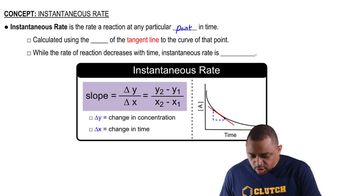Here are the essential concepts you must grasp in order to answer the question correctly.
Radioactive Decay and Decay Constant
Radioactive decay is the process by which an unstable atomic nucleus loses energy by emitting radiation. The decay constant (λ) is a probability measure of the decay of a radioactive isotope, indicating the fraction of a sample that decays per unit time. It is related to the half-life (t1/2) of the isotope by the equation λ = ln(2) / t1/2, allowing us to calculate the decay constant from the half-life.
Recommended video:
Rate of Radioactive Decay
Molar Mass and Avogadro's Number
Molar mass is the mass of one mole of a substance, typically expressed in grams per mole (g/mol). For potassium chloride (KCl), the molar mass can be calculated by adding the atomic masses of potassium (K) and chlorine (Cl). Avogadro's number (6.022 x 10^23) is the number of particles in one mole of a substance, enabling the conversion between grams and the number of ions or molecules.
Recommended video:
Disintegration Rate
The disintegration rate refers to the number of radioactive decays occurring per unit time, often expressed in disintegrations per second (dps). This rate can be calculated using the decay constant and the number of radioactive nuclei present in a sample. By multiplying the decay constant by the number of 40K nuclei in 1.00 g of KCl, one can determine how many disintegrations occur per second in that sample.
Recommended video:
 Verified step by step guidance
Verified step by step guidance


